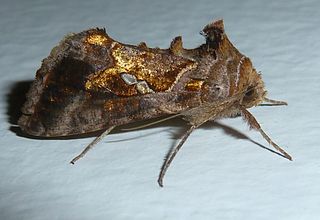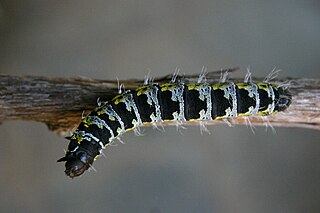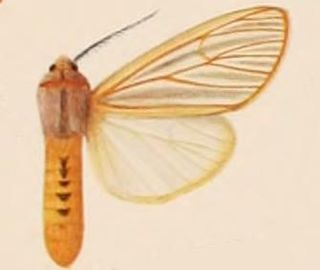
Zimbabwe, officially the Republic of Zimbabwe, formerly Rhodesia, and Zimbabwe Rhodesia, is a landlocked country located in Southern Africa, between the Zambezi and Limpopo Rivers, bordered by South Africa, Botswana, Zambia and Mozambique. The capital and largest city is Harare. The second largest city is Bulawayo. A country of roughly 14 million people, Zimbabwe has 16 official languages, with English, Shona, and Ndebele the most common.

Harare is the capital and most populous city of Zimbabwe. The city proper has an area of 960.6 km2 (371 mi2) and an estimated population of 1,606,000 in 2009, with 2,800,000 in its metropolitan area in 2006. Situated in north-eastern Zimbabwe in the country's Mashonaland region, Harare is a metropolitan province, which also incorporates the municipalities of Chitungwiza and Epworth. The city sits on a plateau at an elevation of 1,483 metres above sea level and its climate falls into the subtropical highland category.

Bulawayo is the second largest city in Zimbabwe, and the largest city in the country's Matabeleland region. The city's population is disputed; the 2012 census listed it at 653,337, while the Bulawayo City Council claimed it to be about 1.2 million. Bulawayo covers an area of about 1,707 square kilometres in the western part of the country, along the Matsheumhlope River. Along with the capital Harare, Bulawayo is one of two cities in Zimbabwe that is also a province.

The Zimbabwe national cricket team represents Zimbabwe in men's international cricket and it's administered by Zimbabwe Cricket. Zimbabwe has been a Full Member of the International Cricket Council (ICC) since 1992. As of 20 March 2020, Zimbabwe is currently ranked eleventh in Tests, eleventh in ODIs and twelfth in Twenty20 Internationals by the ICC.

Colophospermum mopane, commonly called mopane, mopani, balsam tree, butterfly tree, or turpentine tree, is a tree in the legume family (Fabaceae), that grows in hot, dry, low-lying areas, 200 to 1,150 metres in elevation, in the far northern parts of southern Africa. The tree only occurs in Africa and is the only species in genus Colophospermum. Its distinctive butterfly-shaped (bifoliate) leaf and thin seed pod make it easy to identify. In terms of human use it is, together with camel thorn and leadwood, one of the three regionally important firewood trees.

Gonimbrasia belina is a species of emperor moth which is native to the warmer parts of southern Africa. Its large edible caterpillar, known as the madora or mopane worm or amacimbi, masontja, feeds primarily but not exclusively on mopane tree leaves. Mopane worms are an important source of protein for many in the region. The species was first described by John O. Westwood in 1849.

The Spilosomina are a subtribe of tiger moths in the tribe Arctiini, which is part of the family Erebidae.
Binna is a monotypic genus of tiger moths in the family Erebidae. It includes one species, Binna pencillata, from West Africa and Kenya.

Robert Gabriel Mugabe was a Zimbabwean revolutionary and politician who served as Prime Minister of Zimbabwe from 1980 to 1987 and then as President from 1987 to 2017. He served as Leader of the Zimbabwe African National Union (ZANU) from 1975 to 1980 and led its successor political party, the ZANU – Patriotic Front (ZANU–PF), from 1980 to 2017. Ideologically an African nationalist, during the 1970s and 1980s he identified as a Marxist–Leninist, and as a socialist after the 1990s.
Rhodesia was an unrecognised state in southern Africa from 1965 to 1979, equivalent in territory to modern Zimbabwe. It was previously the colony of Southern Rhodesia.

The Tomato Looper or golden twin-spot moth(Chrysodeixis chalcites) is a moth of the family Noctuidae, subfamily Plusiinae. It is found from southern Europe, the Levant and tropical Africa, but can be found in great parts of Europe because it is a migratory species. It has also recently been reported from North America.

Trigonodes hyppasia, the triangles or semi-looper, is a moth in the family Erebidae. The species was first described by Pieter Cramer in 1779. It is largely cosmopolitan, found throughout Borneo, Fiji, India, Nepal, Sri Lanka, São Tomé and Príncipe, Taiwan, Zimbabwe, northern Australia, and almost all African countries.

Cirina forda, the pallid emperor moth or shea defoliator, is a moth of the family Saturniidae. The species was first described by John O. Westwood in 1849. It is found in western Africa, including Ghana, Nigeria, Zimbabwe, the Democratic Republic of the Congo and South Africa.
Radiarctia is a genus of moths in the family Erebidae from Afrotropics.
Pseudoradiarctia is a genus of moths in the family Erebidae from Afrotropics.

Radiarctia jacksoni is a moth of the family Erebidae first described by Walter Rothschild in 1910. It is found in Ethiopia, Kenya, Zaire and Tanzania.

Amata alicia is a species of moth of the subfamily Arctiinae. It occurs throughout Africa, from Morocco to South Africa.
Radiarctia sinefascia is a moth in the family Erebidae. It was described by George Hampson in 1916. It is found in Nigeria and Zimbabwe.
Radiarctia melanochoria is a moth in the family Erebidae. It was described by Erich Hering in 1932. It is found in the Democratic Republic of the Congo and Rwanda.












